De Holdeurn
Q17453684Nijmegen: city in the Netherlands, where several Roman settlements have been discovered.
De Holdeurn
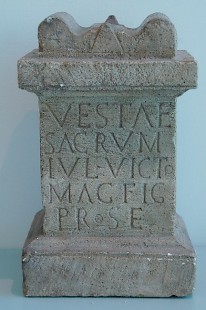
Not far from the Hunerberg fortress - at a distance of 3½ kilometer, to be precise - the soldiers of the Tenth legion Gemina established a pottery, where they produced roof tiles, bricks, and ceramics. The site has been discovered at a country estate called De Holdeurn, in a village called Berg en Dal, along the Oude Kleefsebaan.
Loam pits were to be found in the neighborhood (in fact, there still is a playground called De Leemkuil, "Loam Pit"), and the loam was first made malleable by adding water. After that, the bricks or tiles were put into molds, which were exposed to the sun, to dry them a bit. Obviously, they were lying on the ground, because several tiles have footprints on them.
After drying, the tiles and bricks were put into the kilns. They have been excavated, but after the archaeologists had investigated them, they were covered with sand again. (At the moment, there is a parking lot on top of them, although there are plans to make this monument more visible.) Not far from the kilns was a large building, which may have been the place where the potters used to live, although this is by no means certain.
There was also a sanctuary dedicated to the Roman supreme god Jupiter, to a local goddess named Hludana, and to Vesta, who -as protector of fire- may have been the patroness of the potters (although Vulcan would have been a more likely choice).
The factory was to continue its production after the legion had left, but was abandoned in the third century.
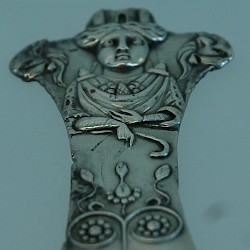 Berg en dal, Silver pan, handle with portrait of Tyche or Cybele |
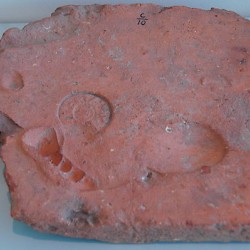 Berg en Dal, Pottery factory, Tile |
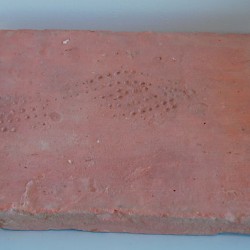 Berg en Dal, Pottery factory, Tile with shoe print |
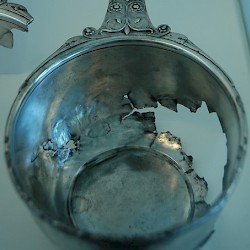 Berg en dal, Silver pan |